
3 Questions To Choose Best Photo Album For Your Family Memories
Not all photograph albums are created equal. Here's 3 questions to ask yourself when choosing the best photo album for your family's memories that will display them well, and preserve the photos for future generations.

Choosing a family album may not seem like a big deal, and your first instinct when you decide to organize your photos may be to just purchase something and get it done.
But what album you choose actually is a big decision because, depending on what you choose, you will be, by default, choosing how much protection you're providing for these precious pictures it will contain, as well as determining how easy or hard it will be for you to fill it up.
Not to mention you and your family will be looking at these albums for many years to come, so what you choose now makes a difference for potentially generations to come.
Therefore, I've forumulated three big questions, some of them with subquestions, you can ask yourself when making the choice of albums to make sure you're choosing the best photo album for you.
You'll find that these questions have some hard and fast rules in them, such as albums I absolutely believe you should NEVER purchase.
But for the most part there is no right answer, just choosing from various options, so what is the "best" album is not the same for everyone. These questions will help you make sure you consider all the options first though, so you're happy with your purchase.
Question 1: Is This An Archival Photo Album?
Lots of albums available at stores are not what are termed "archival," or actually safe to store photos in long-term. Even the really cute expensive ones. "What?" you ask. I know. It's actually really aggravating, because once you put pictures into a photo album your plan is for those photos to stay there, permanently.
Unfortunately, this doesn't seem to be a consideration for manufacturers of some of these items. But adding photographs into an album that is not archival quality will eventually be something you, or future generations, regret. The damage is slow to show but it will happen.
Types Of Albums To Avoid
Do not buy albums with adhesive backing. The adhesive which causes the photo to basically be lightly glued to the page eventually yellows and becomes brittle, and can make the photos extremely difficult to remove, perhaps ripping the fragile paper if you ever try. Plus, it can cause the photograph to disintegrate because of the chemicals within it. Similarly, do not purchase photo albums with the magnetic backings either.
Steer clear of albums made with pages or covers that are not acid and lignin free. Lignin is a type of chemical compound, found in wood, that is often used to make paper stronger. But over time the lignin in this type of paper breaks down and releases acids. This causes the paper to turn yellow, and then brown. As the acids cause this damage to the paper itself it also damages other things that paper is touching, like the precious photographs you've placed in the album.
Avoid albums with poor quality plastic. In the past lots of albums with sleeves or pockets for photos were made of PVC plastic, or a similar poor quality plastic covered each page of the album to "protect" the photo underneath. But these types of plastics also breakdown and produce acids which harm the photos, including making them sometimes stick and adhere to the plastic making it impossible for them to be removed.
The safe plastics to use for photos are polypropylene, polyethylene and Mylar.
What You're Looking For With An Archival Photo Album
When purchasing an album for storing your family's memories, long term, you're looking for these criteria:
- Photo safe
- Acid free
- Lignin free
- PVC free
If the photo album you're thinking about doesn't state it is these things mentioned above you should assume it does not meet your criteria, and steer clear of it. It may look cute now, or be cheaper, but you'll regret it later, even if that regret isn't evident for 20+ years.
Question 2: Does This Album Have The Features I Want Most?
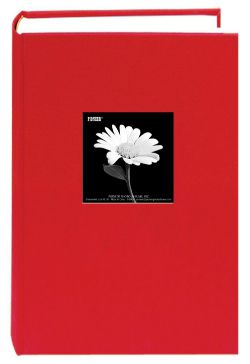 Pioneer Brand Archival Photo Album
Pioneer Brand Archival Photo Album[Click here to buy on Amazon]
Once you've narrowed down your search of the best photo album for you to those which are archival quality, then this is where you really get to start making choices that suit you.
For the next two questions there really aren't right and wrong answers, just things to consider.
Question number 2 focuses on some important features that differ between albums, to make sure the one you choose works best for how you want to use it. I think it's easiest to explain some of the choices of features by giving you an example as I list several subquestions to ask yourself.
To the left is the photo album we'll evaluate. It is a Pioneer brand archival photo album (available at the link on Amazon), and is a pretty popular brand on the site. I chose red because it is pretty, and I like that color (see Question 3 below!) but there are many colors available.
The features that you should know about this album used an the example is that it holds 300 4x6 inch photos in plastic sleeves, three per page, with a memo area. It also states it is "Archival, photo safe-acid, lignin and PVC free."
Pioneer Photo Albums {Referral Links}
What sizes of photos do you want to add to the album? There are lots of common sizes of photos. These include wallet, 3x5, 4x6, 5x7, and 8x10, plus even more. If you've got a variety of photo sizes to display an album like the one shown may not work well for you, because it only holds 4x6 photos.
If you've got a variety of photo sizes finding a photo binder which has a few different types of photo sleeves, that can accomodate various sized photos, may be helpful. Here's some photo archival storage binder pages that may work for that purpose, for example. The binder pages in the link are 5x7, but there are other sizes available as well, which you could mix and match for whatever sized pictures you've got.
Here are more available:
Photo Album Binder Pages {Referral Links}
Do you want to arrange the photos artistically or just easily insert them into the designated spot?
There's something to be said for quickly putting photos into photo sleeves or pockets and calling it a day. It is easy, and at least for me, easy means it is more likely to get done (like it is also easier if I organize photos as part of a routine). I could see myself using the red example photo album if I had a big stack of photos all of the same size, and adding the photos while I watched TV and calling it a day.
But some may consider this a bit boring visually, and not like it as much. If you want to be a bit more artistic or creative, and you've got enough time, you might like to instead use photo corners (referral link) so you could arrange various sized photos onto a page yourself. This can quickly turn into scrapbooking though, which is a whole other animal for time investment, so just keep in mind how much time you really have before making this choice.
Also remember, when purchasing any materials to mount your own photos into albums, if you don't want to use photo sleeves, you've got to make sure all those supplies are all archival as well, for the same reasons stated above. That means again you're looking for items that are acid free, lignin free and PVC free, as well as photo safe.
Are you able to add labels to the photos without writing on the picture itself?
Not all photo albums allow you to add labels underneath the photos to say more about it, and when you're creating your album you most likely don't need labels, at least right that second. After all, right then, you know who those people are, and you know where you were. You lived it and it most likely happened relatively recently.
But think about it. We've all looked at old family photos and had no idea who someone in the photo was, either because we've forgotten or because we had personally never met them. If you want future generations to appreciate these albums having a space to add just a bit of information is helpful. This red album states it has a memo area, so when doing your evaluation you might think it fits the bill well, but you'd want to make sure it was what you envisioned and wanted for this purpose before using it just to make sure.
Can I easily insert more photos into the middle if I discover more pictures later?
Finally, this is something I've personally noticed I need a lot of the time. I realize after I've assembled my album, oops, I forgot to add a couple of photos and then those few I came across are out of order chronologically. Or perhaps I've received some from a friend that they took for me, so when I assembled my album I didn't realize those would be available. Now it's not all in order anymore. That bugs me.
If you've got photo sleeves, yes, you can just take them out and shift everything, but what a pain. I personally appreciate albums where you can insert more pages in the middle so you can fix this problem more easily.
The red one we're using as an example does not do that. Instead, the easiest type of album that lets you insert photos later are binder albums, like this one, which work well with the binder sleeve pages I mentioned earlier.
Here are some that are available:
Photo Album Binders {Referral Links}
Question 3: Does This Album Fit Onto My Bookshelf & Look Pretty?
Finally, once you've chosen the features that will work best for you, the fun decisions come into play. There are many really beautiful archival photo albums available, with lots of color choices, and sizes. Again, there are no right or wrong answers here, just what you want.
Just make sure you consider where you're going to store these albums when making decisions about which ones to purchase. (You can also read my article on the 5 rules of storing pictures here to make sure you're choosing a good spot).
Buying a huge album that is cute, but won't fit on your shelf, or clashes with your decor in the room you plan to display it, or that doesn't match the other albums you already have, can make you less happy about a purchase.
Finaly, don't forget to also read the Organize Photos Challenge here on the site for even more instructions and tips for organizing this type of items in your home.
Types Of Albums Featured In This Article
I have found that Amazon is a great place to look for a variety of different types of archival photo albums, to find the best one for you. Here are some more that are available:
Archival Quality Photo Albums {Referral Links}
I hope you've found these questions helpful in deciding what, for you, is the right and best photo album for your family's photographs. If you've got other things you like to consider when choosing albums make sure to tell me below in the comments.
In addition, check out my round up of over 40 photo storage and organization products (referral link), that are all archival quality, that can help you with this task, on Amazon.
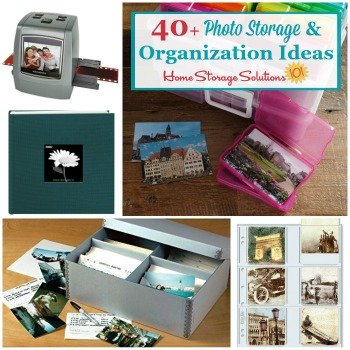
Get This Sentimental Items Decluttering Checklist + 32 Other Decluttering Checklists For Your Home
Right now you're decluttering sentimental items from your home, and it's one of the hardest categories to work through. Make sure to take your time with these items, while using this checklist to make sure you don't forget about anything.
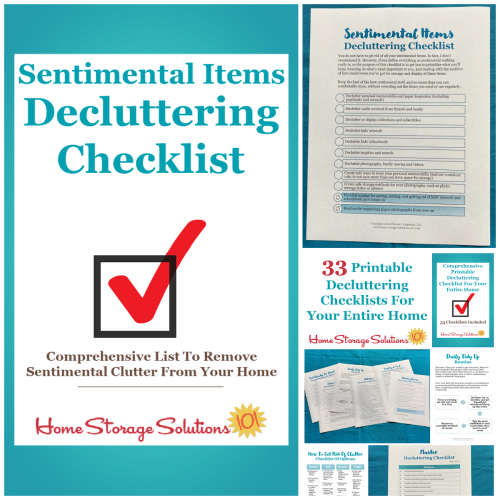
I've done the hard work of breaking down these tasks into smaller more manageable steps for you, so you don't get overwhelmed or worry you're forgetting a task, and you can go at the pace you want, whether that's fast or slow.
In addition, you can tackle these decluttering tasks in whatever order you want when you use these checklists!

Some links on this page are affiliate links, meaning that if you purchase a product through them I receive a small commission which helps me provide this information to you for free, plus support my family. My integrity and your satisfaction are very important to me so I only recommend products I would purchase myself, and that I believe would benefit you. To learn more please see my disclosure statement.
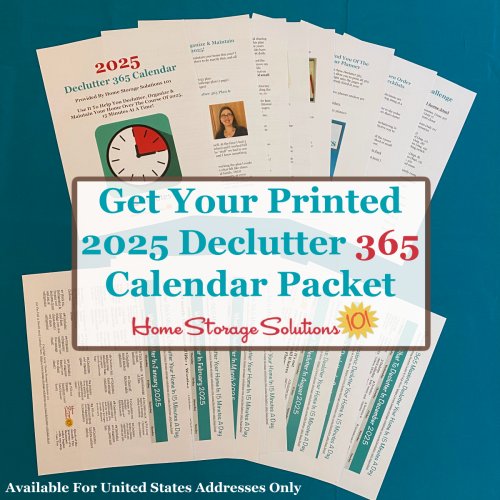
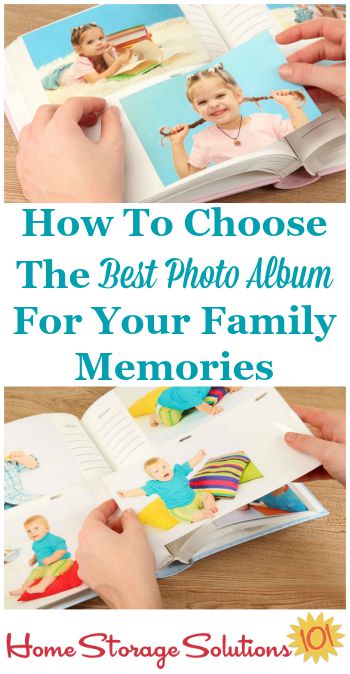


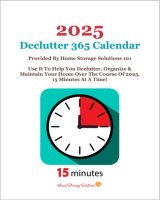










Share Your Comments, Tips & Ideas
I would love to hear from you, sharing your thoughts, questions, or ideas about this topic, so leave me a comment below. I try to always respond back!